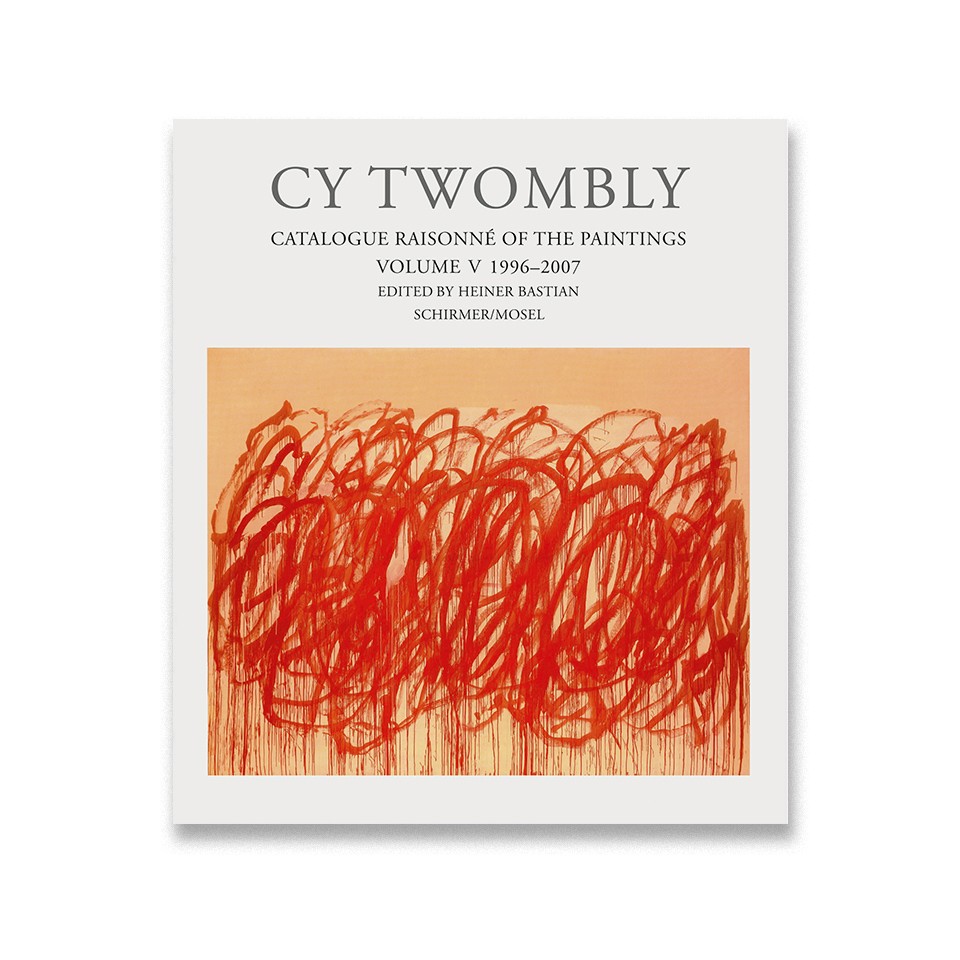Cy Twombly
Catalogue Raisonné of the Paintings
Volume V, 1996–2007
Volume V, 1996–2007

Cy Twombly Catalogue Raisonné of the Paintings Volume V catalogues works produced between 1996 and 2007. Published fourteen years after the preceding volume, it also offers an updated bibliography and list of exhibitions. The stated aim of Heiner Bastian’s introductory text “is nothing more than to steer the gaze towards the work” (9). He offers extended consideration of Twombly’s Study from the Temeraire (1999), the first work catalogued in this volume, in dialogue with J.M.W. Turner’s The Fighting Temeraire tugged to her Last Berth to be broken up (1838). This is accompanied by a focus on Twombly’s boat ideogram, both in its Phoenician, Etruscan, and Egyptian referents and as “the ciphers of death and ashes” (42), which is carried throughout the full text. Bastian discusses each of Twombly’s major painting cycles of this period—namely, Coronation of Sesostris (2000), Lepanto (2001), and the Bacchus paintings—in relative depth, focusing on detailing the relevant history and mythology alongside identifying cyclical thematic returns. Bastian also remarks on Twombly’s floral motifs, in works like Blooming: A Scattering of Blossoms and Other Things (2007) and his peony series. There are also briefer discussions of A Gathering of Time (2003) and Three Notes from Salalah (2005–2007).
Bastian’s introductory essay marks most of the major works scholars may be interested in in this volume, Coronation of Sesostris and Lepanto prominent among them. The volume is especially important for those interested in Twombly’s engagement with poetry and inscriptions, which come to the fore both in more mythologically-oriented works like Coronation of Sesostris and more poetically-oriented works like the peonies series. The latter will be of particular interest to researchers focused on the artist’s engagement with Japanese haikus. It will also be useful to scholars researching works produced in Lexington, as many of the artworks included in the present volume were produced there. There remain a significant number of works produced in Gaeta as well. Works like Lepanto also include connections to works produced in other media, such as Twombly’s sculpture Untitled (2001), on which see Catalogue Raisonné of Sculptures Volume II, cat. no. 43.
Many of the texts noted in the bibliography of this catalogue raisonné remain the major sources on these artworks. Notably, scholars referencing this catalogue might also consult the following: for Lepanto, see the eponymous catalogues from Gagosian Gallery (2002) and the Museo del Prado (2003); for Coronation of Sesostris, see Cycles and Seasons, ed. Nicholas Serota (2008) and Mary Jacobus, “Time-Lines: Rilke and Twombly on the Nile” (2008); for Blooming: A Scattering of Blossoms and Other Things, see the eponymous catalogues from the Collection Lambert en Avignon and from Gagosian Gallery (both 2007); on Study from the Temeraire and Blooming: A Scattering of Blossoms and Other Things, see Turner Monet Twombly: Later Paintings, Jeremy Lewison (2012); on A Gathering of Time, see the eponymous catalogue from Gagosian Gallery (2003).
(Publication description by Jamie Danis)
Cy Twombly Catalogue Raisonné of the Paintings Volume V 1996–2007. Edited by Heiner Bastian. Munich: Schirmer/Mosel, 2009. Fully illustrated. English/German bilingual edition.